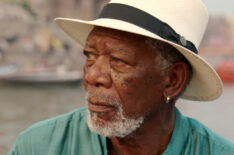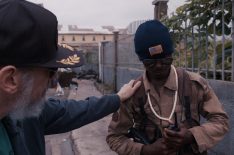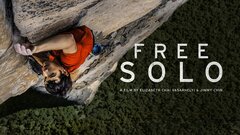Alex Honnold on Climbing to New Heights for National Geographic’s ‘Free Solo’
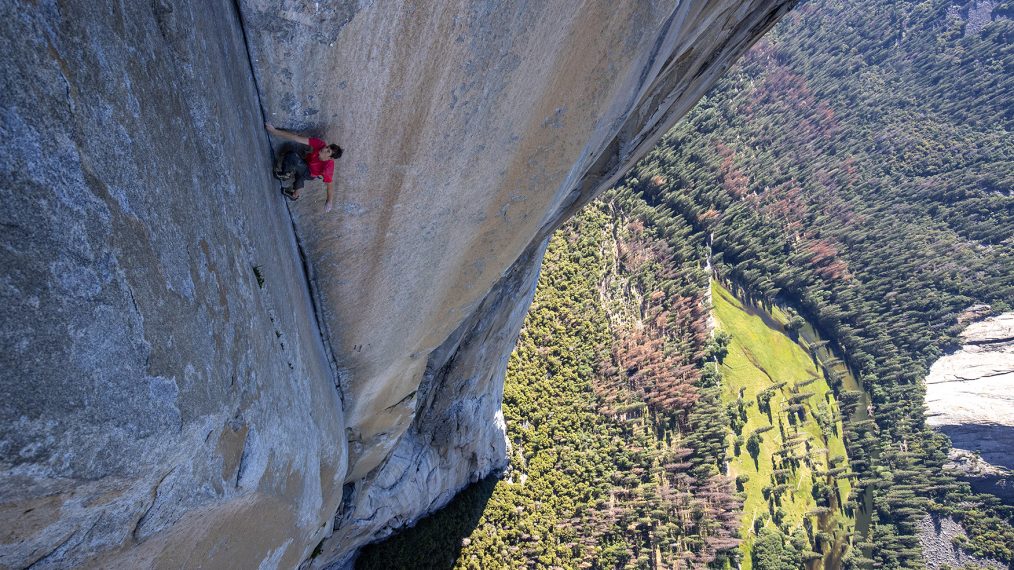
Preview
To call Yosemite’s El Capitan a “cliff” is an understatement; it is an almost incomprehensible behemoth, a 3,200-foot wall of granite that rises vertically from a valley.
To tourists, it’s a reminder of nature’s bizarre sense of humor — and a nifty backdrop for a family photo. To rock climbers, it is their mecca, and the center of their sport’s universe. And for Alex Honnold, it was the focus of his decade-long obsession with perfection.
Honnold, already one of the world’s most accomplished climbers, dreamed of being the first person to scale “El Cap” — as it’s known in climbing circles — free solo, without the aid of ropes, harnesses or safety gear. And National Geographic’s heart-stopping and Oscar-winning (for Best Documentary Feature) film Free Solo by married filmmakers Elizabeth Chai Vasarhelyi and Jimmy Chin follows him as he prepares for and achieves this impossible feat.
“We worked on the film for two years, so there was never any guarantee that I was going to be able to do the climb, or that I was going to even attempt the climb,” says Honnold.
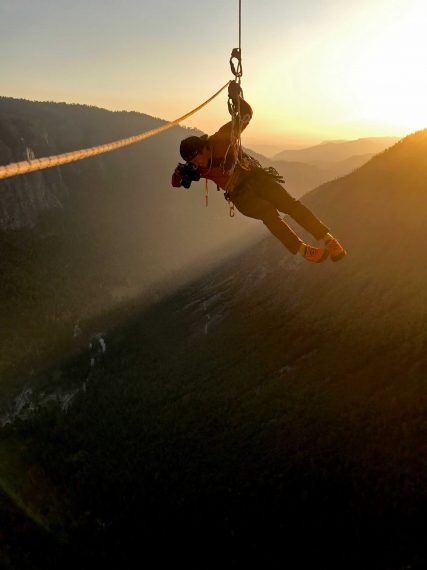
Co-director Jimmy Chin during production on “Free Solo” (Cheyne Lempe/National Geographic)
Climbing ropeless is a feat most climbers won’t attempt because there’s no room for error; even the tiniest misstep can have fatal repercussions. Honnold’s climbing peer Tommy Caldwell compares the El Capitan free solo attempt to the Olympics of climbing. But “if you don’t get that gold medal,” he says, “you’re going to die.”
Honnold knew the film would chronicle his El Cap attempt but didn’t realize that his personal life would become its true focus, as a fair portion is spent understanding who Honnold is as a human and what drives him to pursue his deadly dream.
“I knew they were interviewing me, Sanni [Honnold’s perpetually sunny girlfriend] and my mom,” he says. “But it wasn’t until I saw the final film that I realized just how in-depth it all went.”
When Honnold and I spoke, nominations for the Academy Awards had been announced the day before, and he was still in a state of excited disbelief.
“It’s crazy,” he marveled. “I’m not a filmmaker, and I’ve never been a big cinephile or anything, so I think it means a lot less to me than the filmmakers. I mean, everyone else involved in the film is so excited about the Oscar nomination, as they should be because it’s an amazing recognition of the hard work they put into it. I wasn’t the one sitting in the editing bay, slaving over the footage for years.”
Honnold reveals that he initially started climbing free-solo because he felt too socially awkward to ask others to climb with him, But perhaps his newfound fame has succeeded in drawing him out of his shell. When we spoke via phone, he was in London promoting the film, and was cheerful and charming (“I’m actually walking past Big Ben as we speak. This is so awesome!” he crowed).
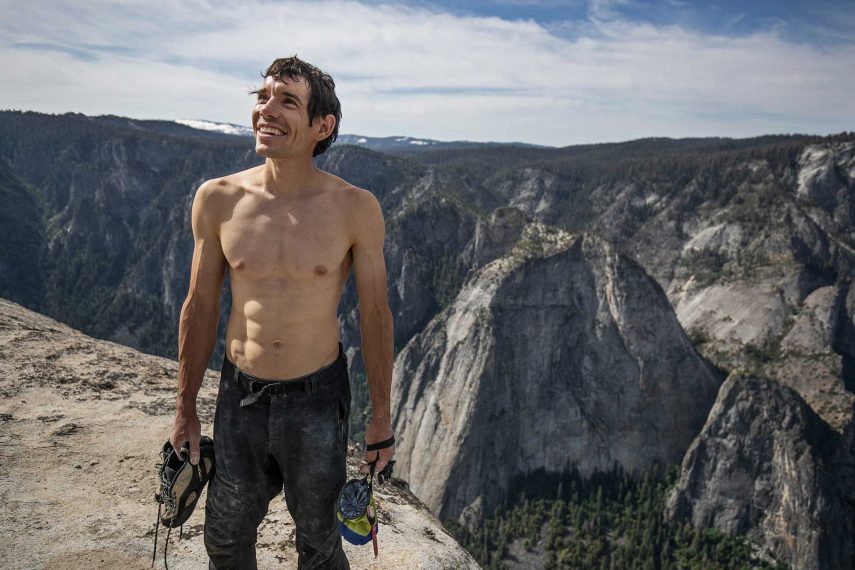
Honnold atop the summit of El Capitan (Jimmy Chin/National Geographic)
Honnold shares that as he’s traveled the world promoting the film, he’s spent a lot of time in climbing gyms and meeting fellow climbers.
“I met somebody in the gym 30 minutes ago who said that he was never a climber, he saw the film two days ago, and was here at the climbing gym because he saw the film and was like, ‘I’ve got to give this a try!’”
Honnold adds, “One of the really great things about getting people out climbing, or inspiring people to go climbing, [is] because it just winds up seeing them care more about the environment in general. Or care about our national parks.”
The climber reveals that another benefit of the film’s success is the attention it has brought to the Honnold Foundation, a non-profit that he created to support solar projects worldwide.
“That’s a big part of why I have a foundation, because there’s no real point in being well-known if you’re not doing anything useful,” he says. “We’ve been getting so many more donations to the foundation because of the film, and it just means we’ll be able to score so many more and more meaningful projects in the coming year.”
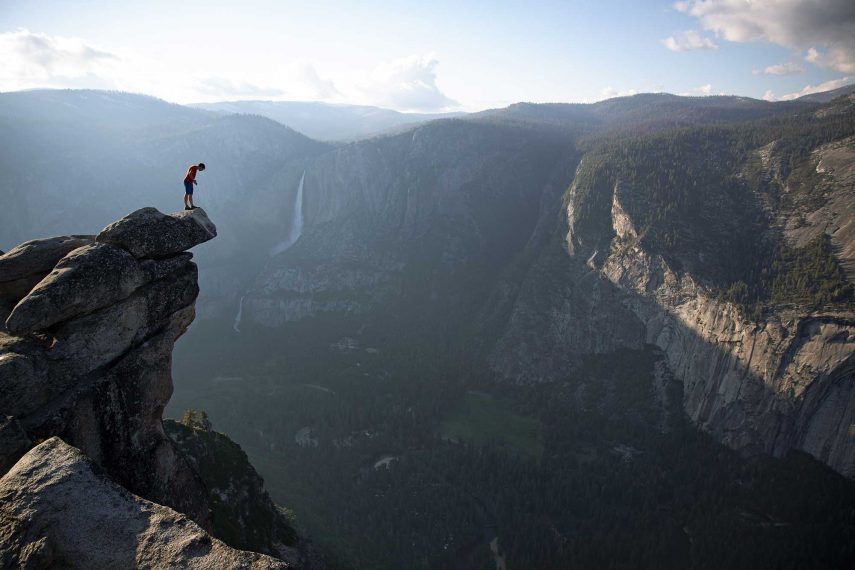
(Jimmy Chin/National Geographic)
Honnold acknowledges that if he hadn’t allowed cameras to chronicle his feat, it wouldn’t have diminished the accomplishment, but he now appreciates the value of capturing it for posterity.
“Certainly, the climb would’ve been just as satisfying,” he says. “Though, now that I’ve been touring with the film for four months, I am sort of recognizing how nice it is to be able to relive one of the best moments of my life almost every night.”
In Free Solo, Honnold recounts his life as a struggling climber, living an isolated and unglamorous life in a van with his nightly meal being an 88-cent dinner from Wal-Mart.
When I screened the film, I watched it with my sons (ages 9 and 11), who begged me to discover Honnold’s thrifty meal, and find out how he descended El Cap post-climb. When I asked both questions, Honnold laughed — tickled that his story had found a young audience. “It used to be a box of penne pasta and then red sauce,” he admits.
For his post-climb descent, Honnold explains, “it’s basically a hiking trail up the shoulder. The face is a big vertical face, but then the top is like this big, broad mountain, and you can sort of run down the side, and then there are a couple-hundred feet of rappelling.
“That’s the way that the film crew was getting up to the summit, and that’s the way that I would go up to the summit to prepare. So, yeah, basically, you just run down the side.”
He says that while his historic ascent took a record three hours and 57 minutes, “That day, it took me about 45 minutes to run down. I was very excited. I was psyched.”
Free Solo, television premiere Sunday, March 3, 9/8c, National Geographic

